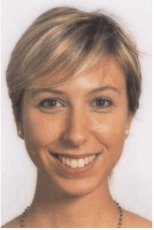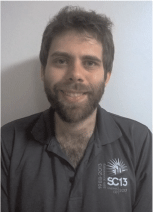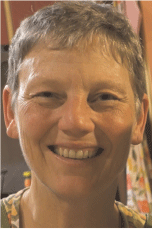Stratigraphic forward model of Springbok Sandstone sedimentation controlled by dynamic topography
Valeria Bianchi A , Troy Smith A and Joan Esterle BA School of Earth Sciences, The University of Queensland.
B The University of Queensland.
The APPEA Journal 56(2) 600-600 https://doi.org/10.1071/AJ15106
Published: 2016
Abstract
After a long history of conventional gas exploration, the eastern Surat Basin in Queensland has developed as an active regional exploration target for coal seam gas, hosting large gas reserves. Interest in understanding basin fill mechanisms for petroliferous basins has grown in response to their economic significance.
The Surat Basin is characterised by sedimentary successions with geometric complexity due to difficulty in correlation of coal splitting, interburden facies, and overburden channel belts. The uncertainty increases away from well control, in particular towards the centre where the basin is sparsely drilled.
The forward modelling in LECODE (landscape evolution climate ocean and dynamic earth) is an innovative geomorphic and stratigraphic forward modelling code capable of simulating surface evolution and clastic sedimentary processes in 3D through geological time. This numerical tool can be used to test geological scenarios and predict the associated grain size distribution and sediment dispersal as a high-resolution synthetic stratigraphic record.
This work focuses on a stratigraphic forward model developed for the Springbok Formation (Late Jurassic) within the Surat Basin. The simulated stratigraphy matches with models proposed by companies, highlighting a depocenter trending northwest–southeast. The formation is divided in two units: lower Springbok, defined by a fining-upward sequence and characterised by high-accommodation space and overfilling processes; and upper Springbok, described as an overall fining-upward sequence, with locally coarsening-upward wedge (conformable with the Weald Sandstone).
The 3D basin simulation forecasts high heterogeneity of depositional geometries and stratal termination in depocentral and marginal areas.

Valeria Bianchi has expertise in facies analysis and stratigraphy of siliciclastic systems with a petroleum geology background. In particular she focuses on factors capable to trigger changes in siliclastic basin architectures, such as tectonic and climatic forcing. |

Troy Smith is a prospective PhD student in geodynamics at the University of Queensland. He completed his Bachelors of Science (Honours) at the university in 2015. |

Joan Esterle is a coal geologist with a PhD from the University of Kentucky (1990). Following a career with CSIRO (1992–2008) and GeoGAS Runge (2008–10), she joined the University of Queensland full time, taking up the chair of the Vale-UQ Coal Geoscience Program. The group has grown to more than six senior researchers and some 20 undergrad and post-graduate students working across a range of projects in 2015. Her main research questions focus on geological controls on the origins and distribution of coal and gas in coal, gas and coal production, overburden geotechnical variability, and coal material properties. These applied research projects are underpinned by a fundamental understanding of peat and coal formation. Joan’s projects are supported through the Australian Coal Association, the Centre for Coal Seam Gas, Australian Low Emissions Coal fund, the Department of Natural Resources and Mines, and a suite of companies. |
References
Babaahmadi, A., Sliwa, R. and Esterle, J., 2015—Understanding faults in the Surat Basin from interpretation of seismic lines, aeromagnetic and gravity data. Confidential research report. Brisbane: Centre for Coal Seam Gas, The University of Queensland.Blum, M.D, Martin, J., Milliken, K., and Garvin, M. (2013). Paleovalley systems: insight from Quaternary analogs and experiments. Earth-Science Review 116, 128–69.
Flament, N., Gurnis, M., and Müller, R.D. (2013). A review of observations and models of dynamic topography. Lithosphere 5, 189–210.
Hamilton, S.K, Esterle, J.S., and Sliwa, R. (2014). Stratigraphic and depositional framework of the Walloon Subgroup, eastern Surat Basin, Queensland. Australian Journal of Earth Sciences: An International Geoscience Journal of the Geological Society of Australia 61, 1,061–80.
Korsch, R., and Totterdell, J. (2009). Subsidence history and basin phases of the Bowen, Gunnedah and Surat Basins, eastern Australia. Australian Journal of Earth Sciences: An International Geoscience Journal of the Geological Society of Australia 56, 335–53.
Moresi, L., Dufour, F., and Mühlhaus, H.-B. (2002). Mantle convection modeling with viscoelastic/brittle lithosphere: numerical methodology and plate tectonic modeling. Pure and Applied Geophysics 159, 2,335–56.
OGIA, 2015—2015 Surat cumulative management area hydrostratigraphic model, report and data set, unpublished.
Salles, T., and Duclaux, G. (2014). Combined hillslope and channel processes simulation applied to landscape and alluvial system modelling. Earth Surface Processes and Landforms 40, 823–39.
Wainman, C.C, Mccabe, P.J, Crowley, J.L., and Nicoll, R.S. (2015). U–Pb zircon age of the Walloon Coal Measures in the Surat Basin, southeast Queensland: implications for paleogeography and basin subsidence. Australian Journal of Earth Sciences: An International Geoscience Journal of the Geological Society of Australia 62, 807–16.
Zhou, F., Tyson, S., Esterle, J. and Sliwa, R., 2015—Surat Supermodel II – an integrated geological framework for CSG. Milestone report in PowerPoint, unpublished.


